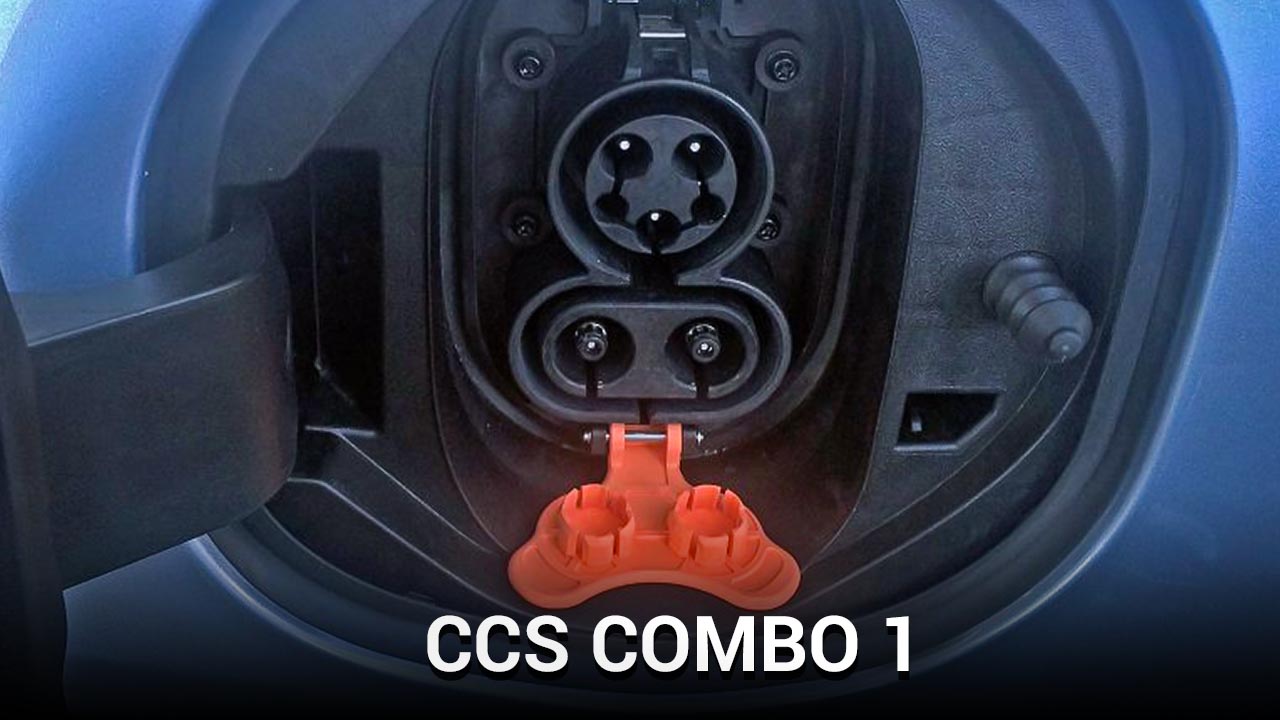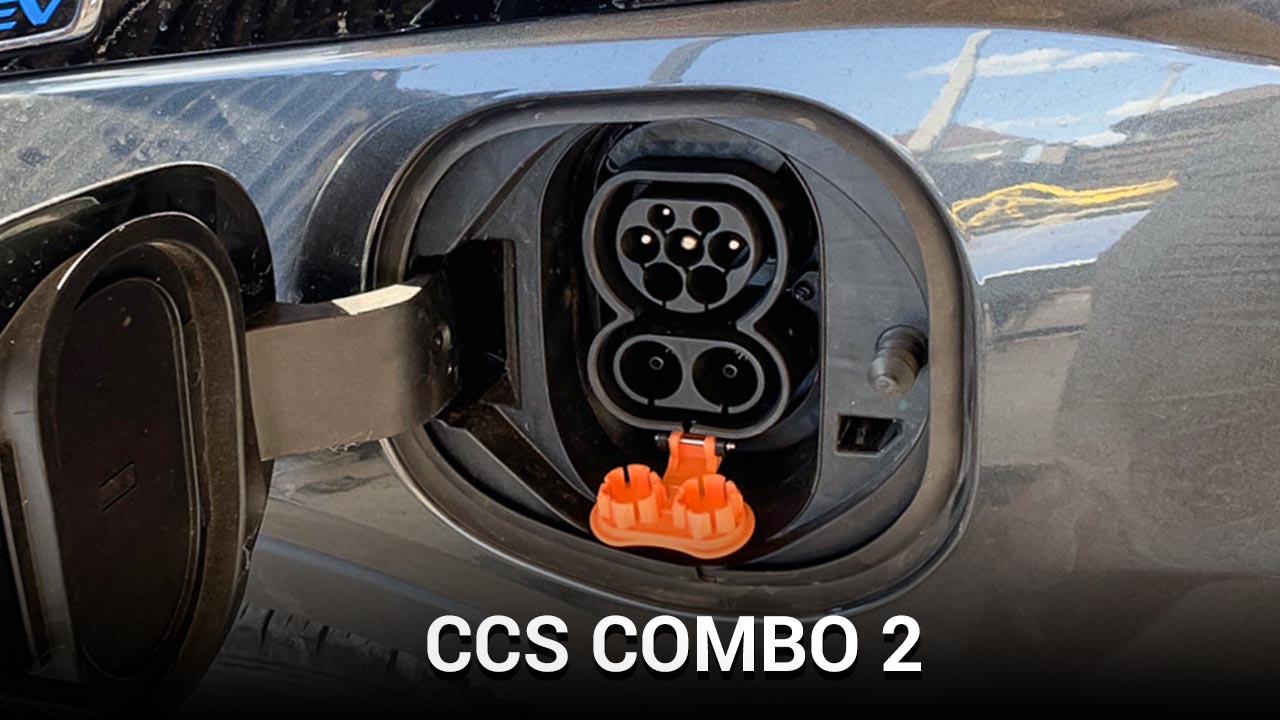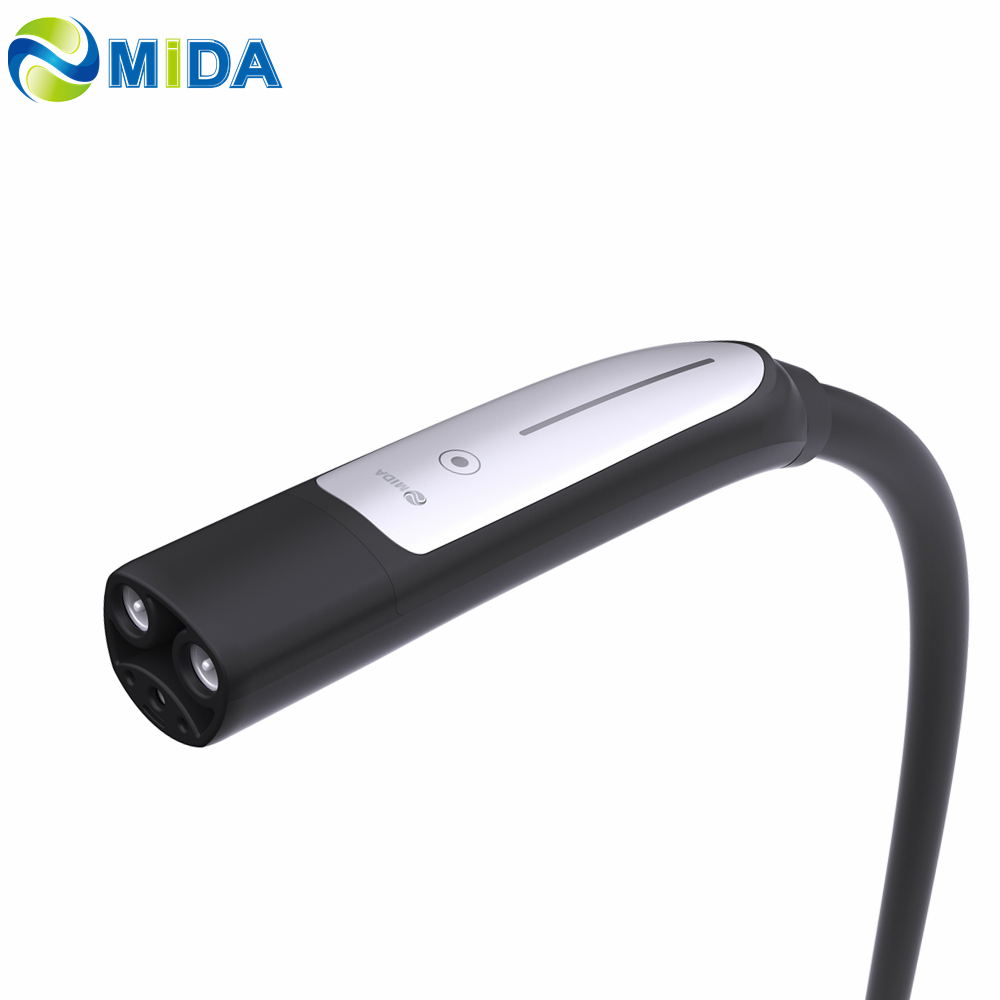There’s a lot of mass confusion about this CCS little do a lot of people know but there are actually two different versions of this. Maybe they see it in pictures but they have no idea that they literally are two different versions of CCS.I will explain the differences between CCS type 1 and CCS type 2 and which one is better and why we shouldn’t be using both.
Why the CCS2 is better CCS1?
So if I had to explain to you which version of CCS is actually better I have to say it’s type 2 and the reason for this is because when you actually take a look at the differences between the two connectors themselves it literally seems like CCS generation 1.0 and then introducing CCS 2.0 the next generation of CCS technology.
As we go on to explain the differences between these two connectors you’re definitely going to get a lot of these vibes, because believe it or not, in every single category that I mentioned CCS2 is actually better in like literally the the ways. I’m about to mention the design needs to focus on security which is basically. How it latches into the vehicle I put a lot of emphasis on this and there’s a reason why CCS type 1 in the United States fails.
So badly so latching mechanism general power output and specifications ease of use to maneuver safety. That’s a very important one because one of these connectors can be very unsafe if it happens to be broken in a specific key area. So, there’s basically those four things: security, safety, power throughput and maneuverability.
Maneuverability
So the first category we’re going to dive in is the ease of use category and for the most part this is literally. Just moving this thing around and trying to actually, plug it into the vehicle now I personally cannot gauge this because the version of CCS that I personally have maneuvered is CCS type 1 because I live here in America meanwhile CCS type 2 is in Europe and I personally never have been to Europe.
So because of this I have zero experience actually trying to maneuver CCS2 cables so the way I am rating this is basically. How I’ve seen the the same person Kyle Connor actually maneuver these cables because he’s been to Europe to maneuver CCS cables plugging them into CCS2 vehicles in Europe. So I’m actually going to completely base this whole easy to plug in metric based off of one entire person’s experience which is not mine. It’s actually Kyle Connors because he lives here in the U.S, So therefore he has a lot of experience with CCS type 1 but he’s also traveled to Europe a lot and has a fair amount of experience with CCS type 2. So I’m going to base my judgments off of that.
So if I have to be honest both of these connectors actually score very low in terms of the easy to plug in because they are massive. There’s only one connector that is commonly used that has this advantage that actually has an easy to plug in advantage and that’s the max connector because honestly CCS both type 1 and type 2 versions they are not the easiest things to plug in they’re actually relatively the same in terms of which is easier to plug in in fact there both pretty bad.
If I’m being honest especially for disabled people and elderly people they are going to absolutely struggle plugging these connectors in there’s one key area as of. Why they both suck actually and this is an area where next handily takes care of things but this is not about NACS this is about CCS type 1 versus CCS type 2 and in terms of ease to plug in. They are both pretty bad at that are both not easy to plug in, But how about unplugging I should probably also and count this as a metric too.
Security
How about unplugging the two connectors now this They actually share absolutely no similarities with and that’s due to their latching design which actually let’s cover that first before we actually talk about how easy it is to unplug them so the way that CCS type 1 latches is there’s actually a mechanical lever action latch that latches onto the car, so the best way I like to describe this is the connector locks onto the car instead of the car locking onto the connector and this is bad for security, more on that in a bit meanwhile CCS type 2 is actually designed with the car locks on the connector and so the connector locking onto the car.
The same advantage that security advantage that I’m going to unplugging it this is one of CCS type 1 biggest floss, how easy it is to unplug it it’s extremely easy even when the cars latching pin that latches onto the handles latch. There’s a separate pin in the vehicle that actually blocks the movement of the lash. So that way you don’t accidentally unplug it well guess what if you push hard enough you can still unplug it and I highly recommend you not do that, because that will definitely cause massive danger, but for the most part it doesn’t really matter. If the car’s locking pin for the latch is in place you can just push the button and just unplug it.
Actually, AC have the exact same latch design as type 1 and type 2 when you’re plugged into an AC charger the vehicle’s pin that blocks the path of the latch on the handle that doesn’t actually engage when you’re AC charging. So the car locking onto the connector I can just be a total jacket unplug this thing so other people can’t charge his electric car site happened it.
Safety
So, that’s a problem with type 1 it’s way too easy to unplug where random are actually unplugging it this is not good meanwhile type 2 actually has the opposite problem in fact actually that thing is really difficult to unplug so not only is it difficult to plug in it’s also difficult to unplug. I do have to point out this really depends on the CCS handle that you actually have plugged in because Tesla’s CCS handle actually perfectly solves this issue. I have to see another CCS type 2 handle that actually does what Tesla just like on the NACS connector there’s an electronic button on the next connector that breaks the voltage in the proximity pilot to let the vehicle know here it’s time to unplug stop charging and release.
Tesla has that exact same button in their CCS type 2 handle where it electronically tells the vehicle all right time to unplug. While the majority of CCS type 2 handles that I’ve seen that are not on Tesla superchargers they don’t have that button that they don’t have any button on the handle at all to tell the car, I’m trying to unplug instead what you’ll find quite often is the cars will actually have a button within the charge port itself, that will actually tell the car all right, we’re unplugging the charge connector or some cars will not even have a button at all.
So what you have to do is you have to dig around in your pocket look for your keys and then double click the unlock button and that will also unlock the charge port. So that way you can unplug the car, I think Tesla does it better I am genuinely confused as to why other CCS2 handle makers including Phoenix contact, Huber and Schooner. Why do their handles not have like an electronic button like Tesla does like to my knowledge that’s not a patent if Tesla can put an electronic button on the NACS connector and their CCS type 2 handles then I am pretty sure that you guys could also put an electronic button that does the same thing so in terms of random unplugging your CCS type 2 vehicle well that’s really hard to do.
Actually, because that thing has a hard time letting go of the connector even just for you the owner of the vehicle while type 1 is so insecure any random can just unplug that one. I guess they don’t exactly bode well in the unplugging experience it’s easy for type 1. Actually, ABC causes a security and a safety risk they both also score very low in terms of ease of use one being way, too easy to unplug the other being way too hard to unplug and both being a pain in the to plug in the first place security.
However, this is where type 2 shines it’s hard to unplug that thing, so because of that CCS type 2 is going to take the security thing safety CCS2 also going to take this why is due to the fact that the type 1 version of this connector happens to have a physical latch that is what holds the connector onto the car in the first place, all it takes is that latch to break. Which guys it is perfectly possible for that latch to break you instantly have a safety risk all it takes is for someone to trip over that cable and you get a major arc flash. You are most likely going to damage your vehicle and hurt yourself if that cable were accidentally to unplug all because the latch is broken. So, type 1 very major safety risk I this is another reason why I do not want to own a car with that connector it is dangerous. Type 2 on the other hand due to the fact that vehicle really does not let that pin go the safety risk is basically mitigated because that thing’s basically plugged in the entire time and power specifications.
Power Throughput
I gotta give it to type 2 again they just dang it’s impressive so to address power delivery these two connectors, actually do it very differently. DC wise for the most part they’re pretty much the same other than Tesla been able to get CCS type 2 to work at above 600 A more consistently and everyone says that CCS in General’s 500 amp limited though I gotta admit I keep seeing all of this to being used above 500 A and looks like scandaling it much better than type 1 ever could.
I’m not too sure why but type 1 just does not seem to be able to go above 500 A as well as type 2, but the biggest difference is actually in the AC form factor three phase is all about the phases with the type 1 connector it is designed for single phase current where you have your hotline and then your neutral line versus the type 2 connector that one has three phase support this is four fingers. Why am I holding four fingers the type 2 connector has three phase support which is three hotlines and a neutral line this allows the type 2 connector to deliver a lot more power than what type 1 ever could because just say it is very capable like, if you actually take a look at a Tesla in Europe you might notice that their onboard Chargers go up to like 16 A on three phase. I’m not entirely sure how that works but what I do know is that three-phase actually gives it a big Advantage especially in Europe.
If you actually plug a vehicle with the type 1 connector here and North America and actually this goes for the next connector too, the next connector is single phase only which CCS does have a three-phase version It’s called the type 2 connector.
When you plug in an electric car here in America into a supply that is actually a three-phase supply like apartment complexes or a lot of other work business Industries. They’ll use three phase themselves you may realize that what you’re getting at home, which is your standard single phase Outlets. What’s going on there actually you might notice, if you pay attention to the statistics that your vehicle may potentially give you. If your vehicle does give you those statistics at all. When you plug into a three-phase outlet your voltage drops just a little bit it drops from 240V to 208V. If you plug into an outlet on a building that has three-phase power.
You’re most likely going to see 208V come through that instead of 240V, like you see at home. So that might explain why you might see a little slower charging when you’re charging at work. If you do that or on apartment complexes because well big building therefore through phase. I’m not entirely sure I hear that three phase is a little more common in the residential space in Europe, which is probably the reason why they ultimately decided to support three-phase and their CCS connector which I guess that makes sense here in North America. It doesn’t make much sense in the residential space and that’s the primary place. Where your car is supposed to be AC charging in the first place. So I guess that makes sense but the type 2 connector also has three phase before on top of murdering, type 1 connector and all other fields like security and safety, two of the biggest features that I do not think are considered enough.
Choose the CCS2
So overall we talked about these four categories ease of use safety security and general power delivery, it’s very clear that the CCS type 2 is the clear winner in these categories.
They both feel the ease of use and that’s just because CCS’s design is unnecessarily bulky. You do not need it to actually be that big all you have to do is do exactly what Max did what for type 1 where basically you got rid of the DC pins and you just use the same AC pins for the DC pins. They just made the AC pins bigger and bulkier therefore you’re taking up less space, therefore it’s much easier to plug that thing in compared to CCS type 1.
Where you got seven pins and then nine with type 2 so they’re big and bulky that makes them not exactly easy to plug in but after that CCS2 is just absolutely, runs away with the rest of the whole categories, safety that thing is very well secured to the point. Actually, a bit of a pain to disconnect that thing but that does Ensure is definitely in there which only improves safety because that means the likelihood of that thing getting accidentally unplugged causing an arc flash is very low and in terms of power delivery again. The DC pins seem to hold a better above 500 A than type 1 does and the three-phase support only just blows the AC standard on the type 1 connector just you get the point overall CCS type 2 is a way better connector compared to the type 1. This is why I consider them to be like two completely Generations not just form facts actors develop.
At the same time I believe they were developed at the same time but just looking at the two it doesn’t feel like they were developed. At the same time it feels like they’re a generation apart we start off with CCS type 1 and then after that introducing CCS 2.0 fixing some major flaws with the type 1 connector like the security of that thing being latched properly improved safety because that thing is properly secure there’s no chance of accidentally unplugging that causing an arc flash and hospitalization it’s overall better it literally feels like there’s a generational gap between the two now.
Europe is stubborn about so many things and the charging standard that they picked despite that actually I do believe that it is technically a little bulkier than CCS type 1 but generally I Justified that both to the fact. They need the two extra pins in order to accommodate for the three-phase support then again make it they only needs seven pins in general because if I’m looking at it correctly I think if you combine the four pins that actually transmit power to the onboard charger wire it up correctly. I think you actually to be able to put some very decent power through those pins and again. I’m not exactly an expert on connector design but I do know a good design when I see one and CCS is just not a good design in general.
So as long as I am here in North America where we still have the choice to use better standards than others I am obviously going to pick NACS over CCS type 1 because even compared to its other siblings CCS type 2 it just sucks there’s your comparison between the two and where will you find these Sports again here in North America. We are stuck with a crappier version which is the type wine connector meanwhile Europe gets the better type 2 version though I will admit it is still not as good as an NACS is still the best one even though, It does have three phase AC support which they’ve got me there but still again next is better small form factor properly secured amazing power throughput and safe.
Post time: Dec-29-2023









